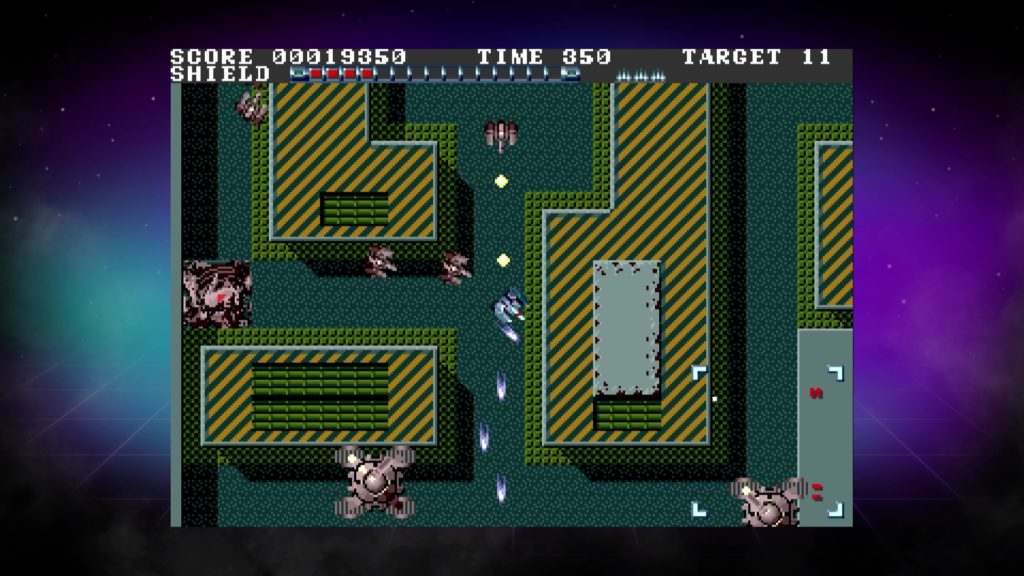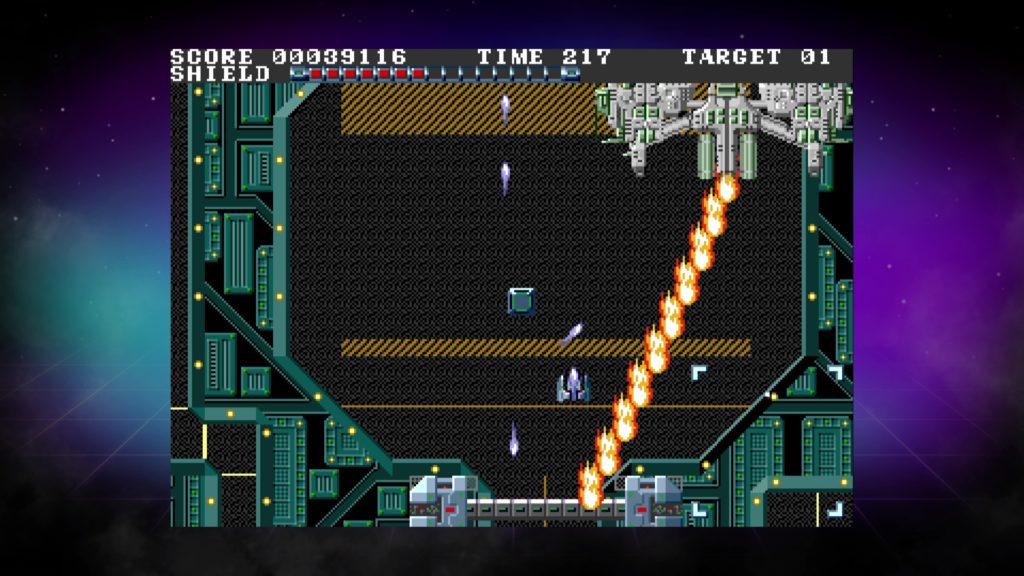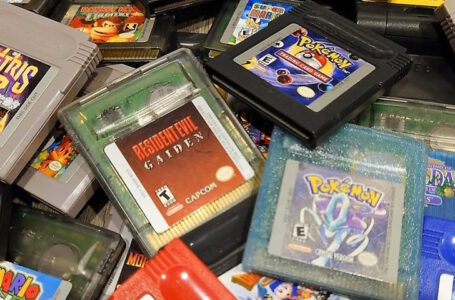Giving tanks for open-world shooting in Granada
As a company that went on to become the developer of Tales, one of the most consistently interesting and varied series of RPGs out there, it will doubtless come as no surprise to you to learn that Wolfteam’s output during the 16-bit era was similarly diverse and creative. I mean, we’ve already seen this to a certain degree with how different the experiences of El Viento and Sol-Deace are — plus Wolfteam were the developer of the original home computer version of Valis — but Granada shows the company turning its hand to yet another type of game to great effect.
Granada was a distinct effort by Wolfteam to de-emphasise narrative aspects in favour of fast, unadorned action. To that end, there’s a brief bit of narrative exposition on the opening screen with some scrolling text, but other than that, this is a title all about the gameplay.
You pilot the hyper-tank Granada, whose origins are mysterious (presumably because with that de-emphasis on narrative exposition, no-one bothered to actually think them up) but whose weaponry is second to none. It’s your job to take it into battle across a series of top-down open-world environments and cause a suitable amount of carnage.

Structurally, what this means is that you’re presented with a large 2D top-down level and challenged to destroy a number of targets in it. Once all but one of the targets have been destroyed, the final one reveals itself as a boss, and you must destroy that to clear the stage. You then simply repeat the process until dead (at which point you can continue up to three times before having to start completely over) or you beat the game.
It’s a simple idea at heart, but what make Granada particularly shine is the fact that each level puts an interesting twist on the formula. The first stage, for example, is a cityscape that is mostly reasonably straightforward to navigate, but which features a few maze-like sections as well as some traps that require careful timing to proceed past.
The second, meanwhile, sees you driving on the back of a huge airborne bomber, shooting its engines off while it’s still in flight — and yes, you can fall off. The third sends you onto a series of narrow and partially ruined pathways suspended high above a futuristic city, the fourth takes you into a cave network — and so on.

Granada’s control scheme takes a little getting used to. Were the game released as a brand new title today, it would likely be implemented as a twin-stick shooter, but since this originated as a Mega Drive game, the idea of two directional controls on one joypad was something that no-one had thought of as yet.
As such, in order to allow Granada to do the tank thing of moving in one direction and firing in another, the game makes use of a “lock direction” button; holding this down means that Granada continues to point in the same direction and thus can strafe around while continuing to fire at a constant angle.
Granada has two main weapons: a rapid-fire gun that is great for picking off smaller popcorn enemies, and a more powerful blast that has a short cooldown between shots and a bit of recoil to deal with. Either can be used to deal with the level’s objectives, but the blast is usually best saved for stronger, static structures — or ripping through a large swarm of weak enemies, since it will pierce and pass through foes that only take a single shot to dispatch.

The rapid shot, meanwhile, is best used to set up a sort of “barrier” that enemies will have to try and pass through in order to reach you; angling this optimally can mean you take out both the enemy forces and their missiles before they get close.
As you explore the open-structure levels, you’ll find a few power-ups lying around. Most commonly, you’ll find the Deflector drone, which can bounce your shots from the rapid-fire cannon at various angles, and homing missile packs that substantially increase your basic firepower, meaning you’ll need to rely less on the blast.
The bosses are all interesting, each requiring something more than simply dodging shots and filling them with bullets until they fall over. Some require you to hit a very specific weak spot; some require careful timing to hit a vulnerable section while avoiding powerful attacks; some actually require you to stop firing for a brief period in order to reveal their weak point. Like most of Wolfteam’s other games, these confrontations are fairly pattern-based in their nature, but some introduce a mild random element — particularly with regard to movement rather than attack patterns — to keep you on your toes.

Granada is a decent-looking game, though by no means one of Wolfteam’s more spectacular titles. The visuals are functional and clear, though the relatively low frame rate of the scrolling perhaps betrays the game’s origins as a home computer game. There’s also some fairly hefty slowdown in evidence when things get busy on screen — but like in most shoot ’em ups from the period, you can actually use this to your advantage at times, as it gives you slightly more time to position yourself out of harm’s way.
Its soundtrack is particularly excellent, however, as you should probably expect from Wolfteam by this point. Tales composer Motoi Sakuraba is once again on composition duties, but this time around he is joined by Masaaki Uno (best known for his work on Mario Golf and Golden Sun these days) and Yasunori Shiono, who would subsequently work on the Lufia series. Sound effects are decent, with some nicely bassy explosions when you destroy the main targets and larger enemies on each stage, and a suitably panic-inducing alarm sound emanating from poor old Granada whenever its shields get a bit low.
While opinions vary as to how well a lot of Wolfteam’s stuff from this era has aged since its original release, Granada is pretty commonly regarded as one of their stronger titles — and it’s not hard to see why. There’s none of the clunkiness seen in some of the company’s other titles from the period; this may be because the game was less boldly experimental in its attempts to combine narrative and gameplay, but for the most part I think it’s safe to say it’s because it’s simply a well-designed, challenging game.

Sure, it lacks the cute pixel-art anime girls of many other Wolfteam titles, but you do have an immensely powerful hypertank to blow shit up with. And sometimes that’s all you need.
Evercade’s Renovation Collection 1 cartridge is available to order now. Screenshots from the Evercade version running on Evercade VS.
Join The Discussion
Rice Digital Discord
Rice Digital Twitter
Rice Digital Facebook
Or write us a letter for the Rice Digital Friday Letters Page by clicking here!
Disclosure: Some links in this article may be affiliate links, which means we may earn a small commission if you make a purchase after clicking on them. This is at no additional cost to you and helps support Rice Digital!
- Letter from the Editor: passing the torch - June 30, 2023
- Super Woden GP 2 is looking promising - June 30, 2023
- Inti Creates is making a 32 bit-style Love Live action platformer - June 26, 2023







